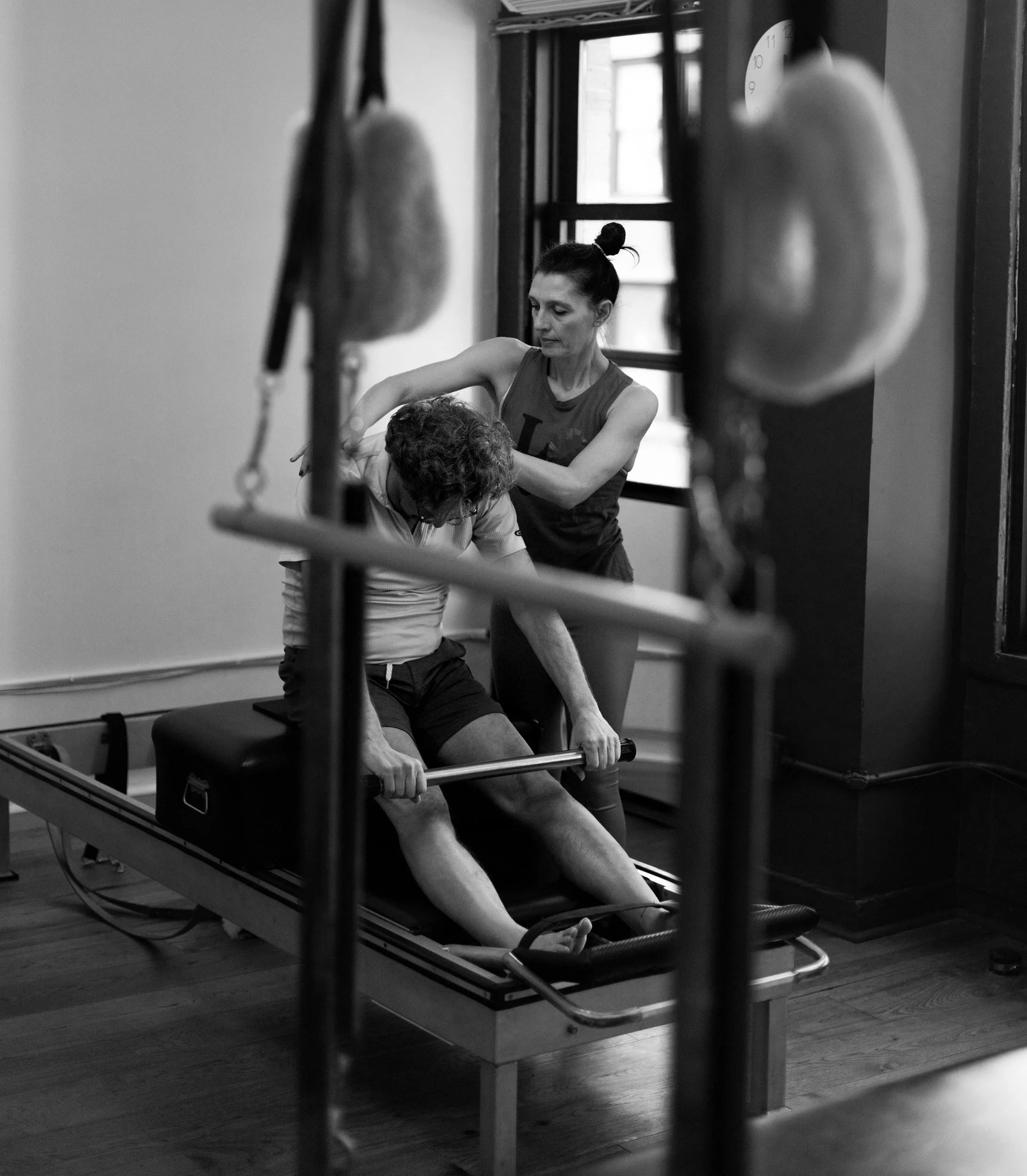Why Asking for Feedback is Essential for Any Good Pilates Instructor
“There is a difference between asking for a review and asking for feedback,” says Alison Johnson, owner of The Pilates Room NYC. “A review is a comment about the experience someone has had at the studio. However, feedback is how you internalize what happened in the class—how did the movements affect you physically? How did you feel after the class? Based on what my client’s goal is, the feedback determines how we course correct to reach that goal.”
Alison checks in with her clients before every session to understand how they felt after the previous session, and how they are feeling before the workout begins. Then she tailors the session accordingly. “I have one client whose goal is to work on her posture. With every exercise, I focus on drawing awareness to where she is in space, and with each exercise we discuss her proprioception and determine the right muscles and movements to help improve her posture.”
It helps to think about accepting feedback as being open to the potential for improvement, which also means being aware that two people may view a single experience through two very different lenses. For example, an instructor may think a particular session went well and that a client made a breakthrough by trying a new skill; however, the client may feel defeated at being unable to perform the new skill with perfection. Because of this, it’s important to communicate with clients to understand how they’re feeling and to help them understand the objectives behind the movements. “Clear communication is imperative for progress—from both the instructor and the client,” Alison notes.
Even though receiving feedback can be uncomfortable at times, perceiving it without judgement and deleting any moral attachments to it can be freeing. At the Pilates Room NYC, we take client feedback seriously and use it daily in our work to improve our clients’ experiences. Here are a few ways feedback helps us improve our relationships with our clients and their overall experience at the studio.
Promoting Communication
Not all clients receive information in the same way, so it’s important for us to learn how each of our clients communicates so that we can make adjustments in our teaching styles. For example, some clients may ask us to identify everything they’re doing wrong so that they can work on their technique to improve their form down to the last detail; however, telling some clients every single thing they’re doing wrong may make them feel overwhelmed. Some clients need more affirmation and encouragement; some prefer more immediate directives. When a client gives us feedback on their preferred communication style, it helps us understand the best way to work with them.
Enhancing Client Experience
Each client has unique needs, goals and preferences. By asking for feedback, we can tailor classes to individual or group expectations, improving client satisfaction. For example, if a client comes in with an injury, it’s our job to get them moving while working around their injury. “We certainly need to know if our client comes in with any pain, and what level their pain is, so that we can be aware not to exacerbate the injury,” Alison notes. “Before coming to us, clients should be cleared by their doctor or physical therapist and be past the acute stage of injury. However, it’s helpful to know what exercises they’ve done in physical therapy so we can integrate that into a full body movement pattern.” Hearing feedback about our clients' condition allows us to create a more comprehensive program.
Building Trust
Pilates inherently asks practitioners to step out of their comfort zones and to tackle movements that may feel uncomfortable, difficult and somewhat bewildering. Trust is imperative in our job as instructors. We have to know if a client is uncomfortable, or tentative or confused about what we’re asking them to do because our priority is to keep them safe. Furthermore, we care deeply about our clients’ progress, and we want them to achieve their goals, so we seek input to show that we’re working with them in solidarity. We know how challenging these movements can be—we were all Pilates beginners at some point! Because of this, we strive to create a supportive, respectful environment to help build trust.
Identifying Blind Spots
Most of the instructors at TPR have been teaching Pilates for over a decade; however, despite this experience, we are always learning from our clients’ feedback. For example, a client may not understand a particular cue that an instructor gives. It’s important that our clients ask for clarity so that we can improve our communication going forward. “I am always learning new ways of explaining movements from the feedback my clients give me,” Alison notes, “and I incorporate that into interactions with future clients.” It’s helpful to know if a client is confused or experiencing discomfort or if the class is moving too quickly or too slowly for them. Feedback helps uncover these blind spots that might not be immediately obvious from the instructor’s perspective.
Encouraging Accountability
When clients are invited to share their thoughts, they become more engaged and invested in their practice. It reinforces a collaborative relationship and motivates them to take ownership of their progress. Also, good instructors are just as invested in their clients’ progress as the clients themselves. “We’re not just going through the motions as instructors,” Alison says, “We are invested in our clients’ success and are determined to help them reach their goals.”
Demonstrating Professionalism
Seeking feedback reflects a commitment to the process and an understanding that just because an instructor is proficient in the task at hand, it doesn’t mean they know everything. Teaching can be an incredibly humbling experience. Constructive feedback from a client signals that the instructor values growth over ego and is able to hear and incorporate feedback without becoming defensive.
In short, asking for feedback isn't just a courtesy—it's a core part of becoming a more effective, client-centered Pilates instructor. We respect and value our clients, and we celebrate their accomplishments alongside them. Building a strong relationship with a client involves learning to accept feedback without judgment.

